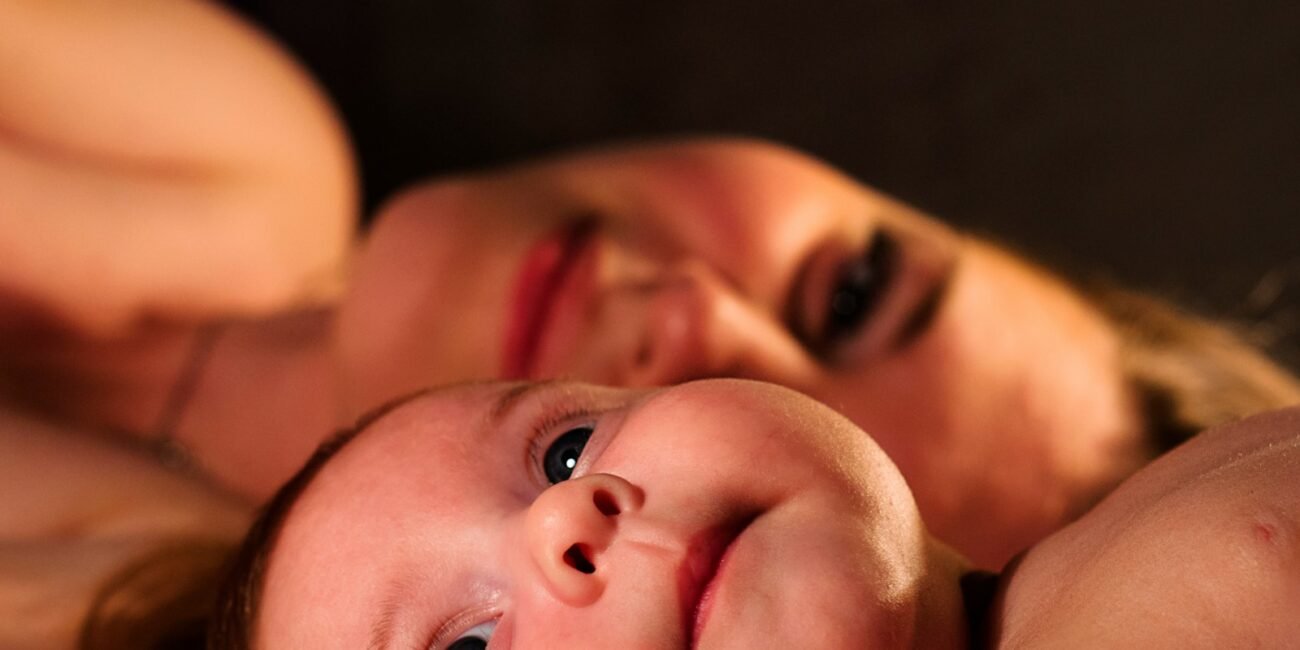5 Effective Sleep Training Techniques to Help Your Baby Sleep Through the Night
One of the most effective sleep training techniques for helping your baby sleep through the night is establishing a consistent bedtime routine. Babies thrive on routine and predictability, so having a set bedtime routine can help signal to your baby that it’s time to wind down and prepare for sleep. This routine can include activities such as a warm bath, reading a bedtime story, and gentle rocking or cuddling. By consistently following the same routine every night, your baby will begin to associate these activities with bedtime and will be more likely to settle down and fall asleep easily. It’s important to start the bedtime routine at the same time each night to help regulate your baby’s internal clock and promote better sleep patterns.
In addition to establishing a consistent bedtime routine, it’s also important to create a calm and soothing environment for your baby to sleep in. This can include dimming the lights, playing soft music or white noise, and ensuring that the room is at a comfortable temperature. By creating a peaceful sleep environment, you can help your baby feel more relaxed and ready for sleep. It’s also important to minimize any distractions or stimulating activities before bedtime, such as screen time or loud noises, as these can disrupt your baby’s ability to settle down and fall asleep. By creating a consistent and calming bedtime routine, you can help set the stage for better sleep for your baby.
Key Takeaways
- Consistent bedtime routine helps in establishing a sleep pattern for the baby
- Creating a comfortable sleep environment can aid in better sleep quality
- Gentle soothing techniques can help in calming the baby before bedtime
- Gradual sleep training approach can be effective in teaching the baby to sleep through the night
- Encouraging self-soothing skills can help the baby to fall back asleep on their own
Creating a Comfortable Sleep Environment
Another effective sleep training technique for helping your baby sleep through the night is creating a comfortable sleep environment. This includes ensuring that your baby’s crib or bassinet is free from any potential hazards, such as loose bedding or stuffed animals, which can pose a suffocation risk. It’s important to use a firm mattress and fitted sheet to create a safe sleeping surface for your baby. Additionally, you can consider using a sleep sack or swaddle to provide a sense of security and comfort for your baby while they sleep.
In addition to creating a safe sleep environment, it’s also important to consider the temperature of the room where your baby sleeps. Babies are sensitive to temperature changes, so it’s important to ensure that the room is not too hot or too cold. The ideal room temperature for a baby’s sleep environment is between 68-72 degrees Fahrenheit. You can use a room thermometer to monitor the temperature and make any necessary adjustments to ensure that your baby is comfortable while they sleep. By creating a comfortable and safe sleep environment for your baby, you can help promote better sleep quality and duration.
Using Gentle Soothing Techniques
When it comes to helping your baby sleep through the night, using gentle soothing techniques can be incredibly effective. This can include techniques such as gentle rocking, patting, or shushing to help calm your baby and encourage them to settle down for sleep. These soothing techniques can help your baby feel secure and comforted, making it easier for them to relax and fall asleep. It’s important to be patient and consistent with these soothing techniques, as it may take some time for your baby to respond to them.
Another gentle soothing technique that can be effective for helping your baby sleep through the night is using white noise or soft music to create a calming atmosphere. White noise can help drown out any background noises that may disrupt your baby’s sleep, while soft music can provide a soothing and comforting backdrop for sleep. By incorporating these gentle soothing techniques into your baby’s bedtime routine, you can help create a peaceful and relaxing environment that promotes better sleep.
Implementing a Gradual Sleep Training Approach
Implementing a gradual sleep training approach can also be an effective technique for helping your baby sleep through the night. This approach involves gradually teaching your baby to self-soothe and fall asleep independently, without relying on external soothing techniques such as rocking or feeding. One popular method of gradual sleep training is the “Ferber method,” which involves gradually increasing the amount of time you wait before responding to your baby’s cries during the night. This can help teach your baby to self-soothe and fall back asleep on their own, ultimately leading to longer stretches of uninterrupted sleep.
Another gradual sleep training approach is the “pick-up-put-down” method, which involves picking up your baby when they cry and then putting them back down once they have calmed down. This method can help teach your baby that they are capable of falling asleep on their own, while still providing comfort and reassurance when needed. It’s important to be consistent and patient when implementing a gradual sleep training approach, as it may take some time for your baby to adjust to these new sleep habits.
Encouraging Self-Soothing Skills
Encouraging self-soothing skills is another effective technique for helping your baby sleep through the night. Self-soothing skills involve teaching your baby how to calm themselves down and fall asleep independently, without relying on external soothing techniques or assistance from caregivers. One way to encourage self-soothing skills is by allowing your baby some time to settle down on their own when they wake up during the night. This can help teach them that they are capable of falling back asleep without needing immediate intervention from you.
Another way to encourage self-soothing skills is by gradually reducing any sleep associations that may be preventing your baby from falling asleep independently. This can include gradually weaning your baby off of any sleep props, such as pacifiers or rocking, so that they can learn to fall asleep on their own. It’s important to be patient and consistent when encouraging self-soothing skills, as it may take some time for your baby to develop these new sleep habits.
Addressing Nighttime Feedings and Sleep Associations
Addressing nighttime feedings and sleep associations is another important aspect of effective sleep training for helping your baby sleep through the night. Many babies develop associations between feeding and falling asleep, which can lead to frequent nighttime awakenings as they seek out comfort from feeding. One way to address this is by gradually reducing nighttime feedings and encouraging your baby to fall asleep independently without relying on feeding as a sleep association.
It’s important to be mindful of your baby’s nutritional needs and consult with a pediatrician before making any changes to nighttime feedings. Additionally, it’s important to be patient and consistent when addressing nighttime feedings and sleep associations, as it may take some time for your baby to adjust to these changes.
Seeking Professional Support if Needed
If you’re struggling with helping your baby sleep through the night, it’s important to seek professional support if needed. A pediatrician or sleep consultant can provide valuable guidance and support in developing an effective sleep training plan that is tailored to your baby’s individual needs. They can also help identify any underlying issues that may be contributing to your baby’s sleep difficulties, such as reflux or allergies, and provide recommendations for addressing these issues.
Additionally, seeking support from other parents who have gone through similar experiences can be incredibly helpful. Joining parent support groups or online forums can provide valuable insight and support from others who have successfully navigated the challenges of helping their babies sleep through the night. Remember that every baby is unique, and what works for one may not work for another, so it’s important to be patient and flexible in finding the right approach for your baby.
In conclusion, there are several effective sleep training techniques that can help your baby sleep through the night. By establishing a consistent bedtime routine, creating a comfortable sleep environment, using gentle soothing techniques, implementing a gradual sleep training approach, encouraging self-soothing skills, addressing nighttime feedings and sleep associations, and seeking professional support if needed, you can help promote better sleep for your baby. It’s important to be patient and consistent in implementing these techniques, as it may take some time for your baby to adjust to new sleep habits. Remember that every baby is unique, so it’s important to find an approach that works best for your individual child. With patience, persistence, and support, you can help your baby develop healthy sleep habits that will benefit them for years to come.
FAQs
What is sleep training?
Sleep training is the process of helping a baby learn to fall asleep and stay asleep through the night. It involves establishing a bedtime routine and teaching the baby to self-soothe and fall asleep independently.
At what age can you start sleep training your baby?
Most experts recommend starting sleep training when the baby is between 4 and 6 months old. At this age, babies are developmentally ready to learn self-soothing techniques and establish a regular sleep schedule.
What are some effective sleep training techniques?
Some effective sleep training techniques include establishing a consistent bedtime routine, using the “cry it out” method, implementing the “fading” technique, practicing the “pick up, put down” method, and using the “chair method” to gradually distance yourself from the baby as they fall asleep.
How long does it take for sleep training to work?
The time it takes for sleep training to work can vary depending on the baby and the chosen method. Some babies may respond to sleep training within a few days, while others may take a few weeks to adjust to the new routine.
Are there any risks associated with sleep training?
While sleep training is generally considered safe, some babies may experience increased stress and anxiety during the process. It’s important for parents to be patient and consistent with the chosen sleep training method and to monitor their baby’s well-being throughout the process.


































